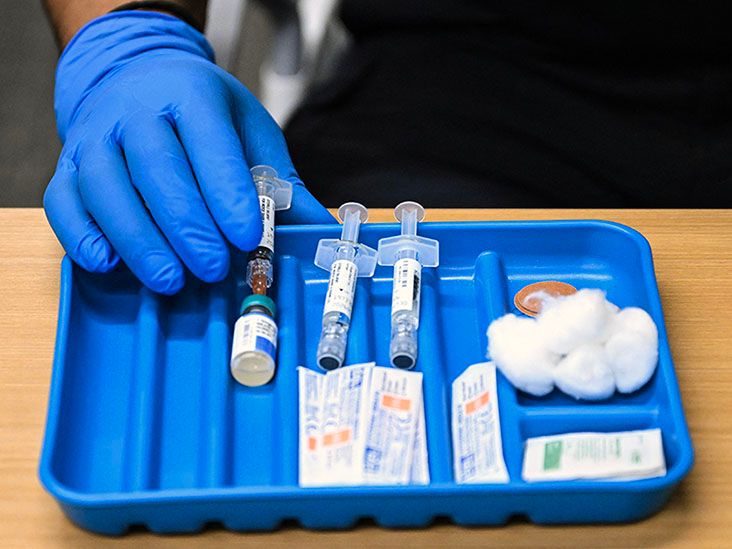Bacterial endocarditis, or infective endocarditis, is a rare infection of the heart lining and valves. It is caused by a bacterial infection and results in flu-like symptoms. The condition may become fatal without proper treatment.
Bacterial endocarditis can develop suddenly, slowly over weeks or months, or following a heart valve replacement.
Antibiotic treatment can fight the infection and help a person make a full recovery.
Read on to learn more about the symptoms and causes of bacterial endocarditis. This article also looks at risk factors, how doctors diagnose the condition, treatment options, and more.
Bacterial endocarditis can cause various signs and symptoms, including:
- fever
- chills
- fatigue
- fast heart rate (tachycardia)
- heart murmur
- shortness of breath
- sweating, which may include night sweats
- persistent cough
- chest pain, particularly when breathing
- swelling, including in the abdomen, legs, and feet
- skin changes, such as spots on the palms of the hands or soles of the feet
- loss of appetite and unexplained weight loss
Bacterial endocarditis is primarily the result of bacteria entering the bloodstream and attaching to damaged areas of the heart. It most commonly occurs in people with one of the following:
- irregular heart valves
- an artificial valve
- a pacemaker
Common bacteria responsible for this infection include:
- gram-positive streptococci
- staphylococci
- enterococci
Together, these cause around
Certain factors make bacterial endocarditis more likely. These include:
older ageTrusted Source - a heart condition
- an artificial heart valve or pacemaker
- intravenous (IV) drug use
- a previous endocarditis infection
- cardiac surgery
- congenital heart disease
- certain detail procedures
- immunosuppressive medication use
A person can contact their doctor if they have concerns about the risk factors for bacterial endocarditis.
To assist with reaching an accurate diagnosis, a doctor will typically ask about symptoms and take a full medical history.
A physical examination will include using a stethoscope to check for atypical heart sounds and rhythms. Doctors might also perform various diagnostic tests, such as:
- blood tests to identify the bacteria causing the infection
- echocardiogram to detect any abnormalities in the valves
- electrocardiogram (EKG) to check for irregular heart rhythms
- a CT scan to look for heart enlargement and signs of infection in the lungs
Treatment for bacterial endocarditis
Antibiotic treatment typically runs for 6 to 8 weeks, with the first 2 weeks involving an IV injection.
Some people may require surgery if the infection has damaged the heart, particularly if they have an artificial heart valve. A doctor can provide more information about the type of surgery required and what it involves.
Without prompt and effective treatment, bacterial endocarditis may lead to serious complications. These can
- ischemic stroke
- heart failure
- intracardiac abscess, which is an infection in the heart
- pneumonia
A person can take steps to reduce the likelihood of developing bacterial endocarditis. These include practicing good oral hygiene and regularly washing their hands to prevent the spread of bacteria.
A doctor may recommend antibiotics if a person is undergoing a medical procedure on a part of their body where there is a suspected infection. However, the doctor will recommend antibiotics only if they are essential, as resistance to them can build up over time.
Anyone experiencing symptoms of bacterial endocarditis should seek medical attention.
Without timely diagnosis and treatment, the condition can cause serious heart valve damage and long-term complications.
Can bacterial endocarditis go away on its own?
Bacterial endocarditis is an infection that requires immediate antibiotic treatment to prevent serious complications. It will not usually go away without medical treatment.
What is the life expectancy of a person with bacterial endocarditis?
There is no specific life expectancy for people with bacterial endocarditis. People can fully recover from bacterial endocarditis with timely diagnosis and treatment.
However, around 20% of people with the infection die within 30 days of infection. It is important to seek medical help as soon as a person has concerns about the symptoms of bacterial endocarditis.
Can a person recover from bacterial endocarditis?
Many people can recover from bacterial endocarditis. The recovery can depend on
Bacterial endocarditis, or infective endocarditis, is a serious infection that affects the heart’s inner lining and valves. It results from bacteria entering the bloodstream.
The infection may cause flu-like symptoms, and it can quickly become life threatening without timely diagnosis and treatment. Various factors increase the risk of infection, including heart conditions and surgery.
Doctors prescribe antibiotics to treat bacterial endocarditis. In severe cases, surgery can be necessary to repair or replace heart valves.
Many people will fully recover from bacterial endocarditis. People with a history of heart problems or surgery should be particularly careful to look out for symptoms of infection. Prompt and effective treatment is necessary to help reduce the risk of serious complications.


